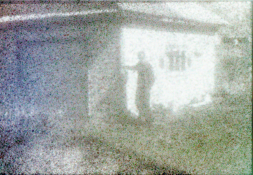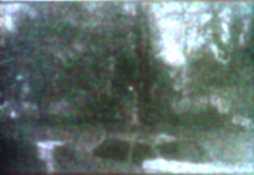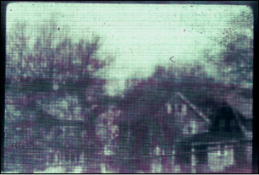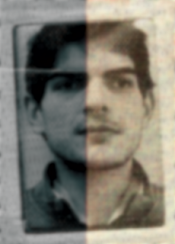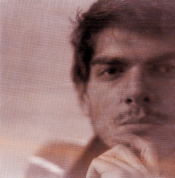yulia_s_rey
Member
Warning terrible looking pictures.. but thought I'd share:
Lately I've been playing around with simple color screens to attempt to someday make my own lenticular color system (like 30s Kodacolor for 16mm) I figured to better understand additive color systems I should start from the basics.
35mm Psuedo-autochrome:
So over the weekend I dyed some flour R,G,B & dried it out. I then took and ordinary 35mm slide cover and taped one side with clear adhesive. I then pulverized the grains and combined them together (approx 40% R, 30% G, 30% B) using a fine mesh I carefully dusted the slide, then I placed a clear acetate over this to seal it. Placed it on the focal plane (hence out-of-focus a bit) I used old Valca 6 Din Cine Film process reversal. Scanned through same transparency. These were taken in my back yard. Not the best snaps but gave me a hands on approach to better understanding Autochrome. Will try on 4"X5" sometime.
Other Screens w/ 35mm:
Using a fine red flower mesh and used a light green acetate sheet I made a simple red-green screen and taped this to the focal plane of my Pentax, like the "psuedo-autochrome above" again same reversal process, scan through mesh.
The last picture, showing B&W and color composite was adjusted in post to get the maximum out of this effect using the mesh method. I know these aren't the best pics but again it was fun.
I know Kodacolor used a lenticular lens system using etched lines on the base, using a single r,g,b tricolor filter.
I'm wondering if by using a lenticular sheet (like the old cereal box ones) and placing it directly on the focal plane &using an r,g,b filter and shooting on regular tri-x. Then outfitting the telecine projector w/ the same filter & lenticular sheet on the gate? Any suggestions?
almost forgot..images are best viewed at a distance or by zooming out.
Lately I've been playing around with simple color screens to attempt to someday make my own lenticular color system (like 30s Kodacolor for 16mm) I figured to better understand additive color systems I should start from the basics.
35mm Psuedo-autochrome:
So over the weekend I dyed some flour R,G,B & dried it out. I then took and ordinary 35mm slide cover and taped one side with clear adhesive. I then pulverized the grains and combined them together (approx 40% R, 30% G, 30% B) using a fine mesh I carefully dusted the slide, then I placed a clear acetate over this to seal it. Placed it on the focal plane (hence out-of-focus a bit) I used old Valca 6 Din Cine Film process reversal. Scanned through same transparency. These were taken in my back yard. Not the best snaps but gave me a hands on approach to better understanding Autochrome. Will try on 4"X5" sometime.
Other Screens w/ 35mm:
Using a fine red flower mesh and used a light green acetate sheet I made a simple red-green screen and taped this to the focal plane of my Pentax, like the "psuedo-autochrome above" again same reversal process, scan through mesh.
The last picture, showing B&W and color composite was adjusted in post to get the maximum out of this effect using the mesh method. I know these aren't the best pics but again it was fun.
I know Kodacolor used a lenticular lens system using etched lines on the base, using a single r,g,b tricolor filter.
I'm wondering if by using a lenticular sheet (like the old cereal box ones) and placing it directly on the focal plane &using an r,g,b filter and shooting on regular tri-x. Then outfitting the telecine projector w/ the same filter & lenticular sheet on the gate? Any suggestions?
almost forgot..images are best viewed at a distance or by zooming out.








